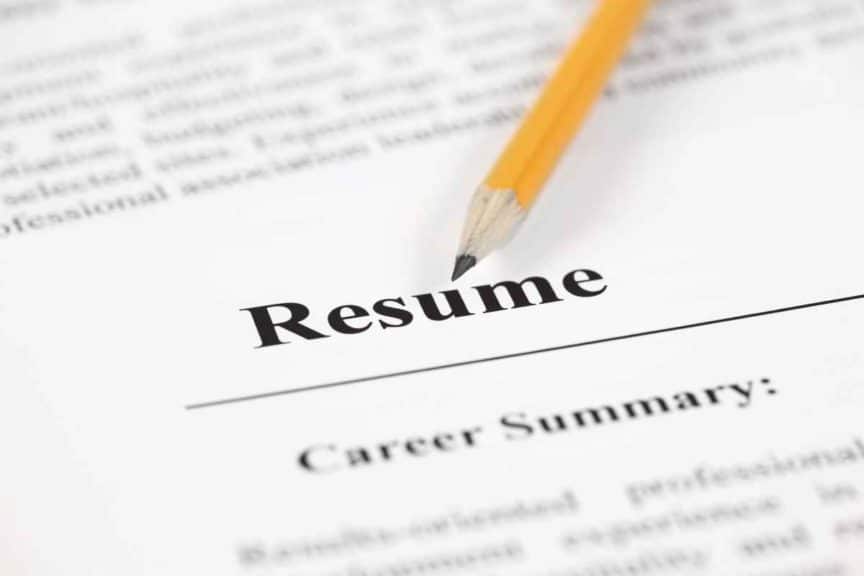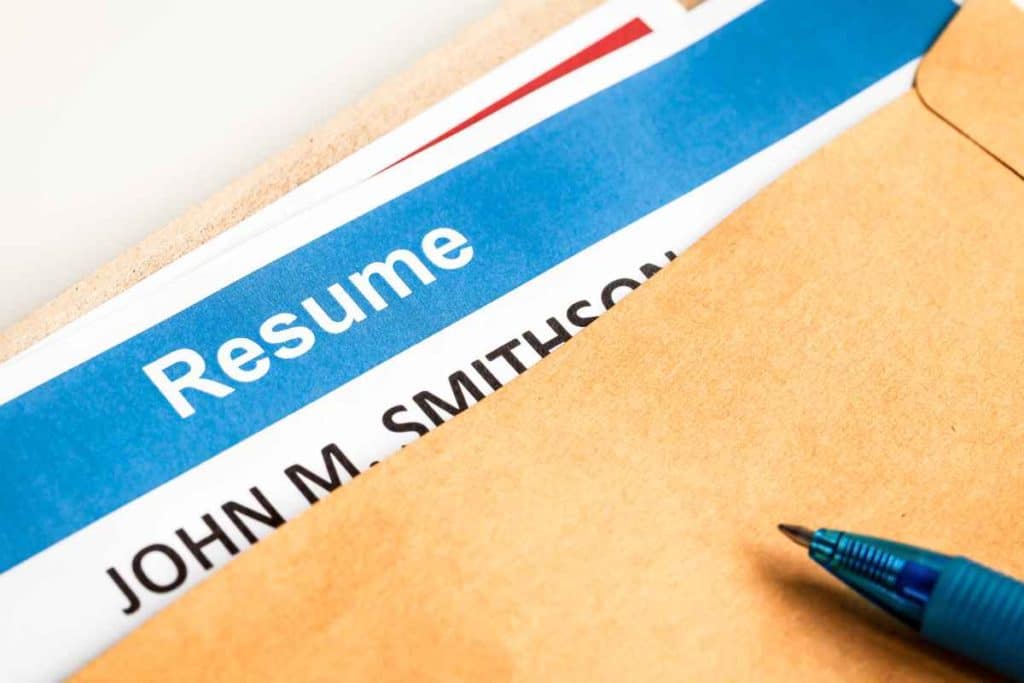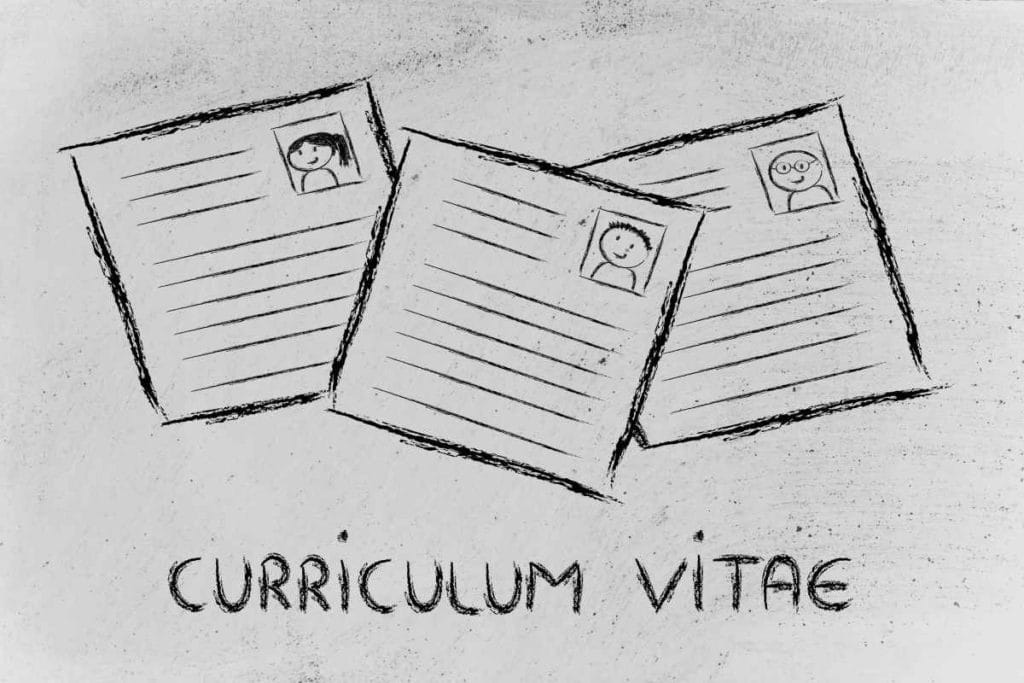Congrats on getting through PT school and passing your board exam(s)! Whether you had the time of your life or hated every moment of it, your next step is looking to find employment as a newly minted physical therapist.
If you can make it through PT school and the board exam, then you certainly can find work within your chosen area of practice. But, just like school, there’s some surefire ways to either make life harder on yourself or perhaps a bit easier during the process.
This article will cover a few key tips to keep in mind that can help your resume sparkle and shine an extra little bit, which could help you land the job you’re after and thus begin the career you’ve been working towards for the last seven years.
As well, if you’re looking to truly maximize your success on landing your dream position, be sure to check out my article: Eight Important LinkedIn Tips for PT Students and New PT Graduates, which has some critical insight on how to up your LinkedIn game for serious success.
The quick overview of resume tips listed within this article
- Key tip 1: If you don’t know where to start and are still enrolled in school, visit your school’s career services department and sit down with one of the professionals who can help you begin to craft a rock-solid resume and cover letter.
- Key tip 2: There is more than one way to craft a cover letter & resume, and not everyone agrees on a universal method or accepted set of criteria, but there are some general guidelines to follow.
- Key tip 3: It may be a better idea to NOT include your GPA on your resume than to include it.
- Key tip 4: Make sure your resume and cover letter mention what you can do for the clinic or facility, not just what the clinic or employer can do for you.
- Key tip 5: It’s perfectly ok to include non-PT skills or experiences if they are appropriate and relevant (and they can provide you with MAJOR leverage).
- Key tip 6: Attention to detail goes a long way.Tons of proof reading, printing on designated resume paper, and other details can all add up and be make-or-break at the end of the day.
These tips are all discussed in further detail within the article, so keep on reading if you’re looking to get the specifics!
PT students and new grads can be quite the diverse crowd, especially when it comes to age, life experience, and work experience. Theoretically, all new grads will have largely the same academic accomplishments on their resumes, but that still leaves plenty of room for individualization and customization across every resume.
What this means for you is that there is absolutely no doubt that you can craft a resume (and cover letter) that is massively unique from those of your peers. With appropriate planning and effort, you can create each of these in a way that stands out from the rest.
Let’s look at the following tips of how you can begin to accomplish this!
Tip 1: If you don’t know where to start, visit your school’s career services department.
If you’re still enrolled within your institution (i.e. just finishing up your program but not yet graduated, or very recently graduated, etc.) then visiting the career services department on your campus could be a great first step in helping to get a resume drafted up, especially if you’re not overly confident on how to create a strong resume and cover letter.
Aside from having a professional give you trustworthy advice, they will also serve as a valuable set of eyes to proof read what you type up. Anytime you get to work with an individual who helps students draft up resumes as part of their career, you should jump all over it. It’s a very simple step to take, but it’s one that holds critical amounts of power for the beginning steps of building a great resume and cover letter.
Tip 2: Follow the standard practices of resume formatting, but don’t get excessively bogged down in the obscure details.
There’s a million different ways to craft your resume and a million different beliefs towards how it should or shouldn’t be done. Regardless, there are indeed some general guidelines that you would be wise to follow.
I’m going to assume that you’ve got your resume all ready to go and at this point just need some extra insight. Or, if you don’t have your resume put together just yet, that’s fine. Just keep these following tips in mind as you work to put it together.
Rules for resumes
- NEVER Staple your resume and/or cover letter
- NEVER Fold your resume and/or cover letter
- NEVER list information that is irrelevant to the job and the position you’re applying for
- A resume can be longer than a single page if all information is pertinent and specific for the job
Note: Some people advocate that your resume should never be greater than one page in length, but many professionals do not advocate this, stating that a resume should be as long as it needs to be in order to cover all essential and job-specific information.
My personal belief falls into the latter category. Personally, my resume has usually taken two pages, with about one third of the second page being used up. I cannot in any way keep all pertinent information confined to a single page.
Also, I personally can not foresee a situation for a new graduate PT needing more than one-and-a-half pages for their resume.
You may disagree with resume length, which is fine. Go by what you feel is best for you. We can agree to disagree if need be.
Rules for cover letters
- NEVER let your cover letter run greater than one single page in length
- NEVER use a generic cover letter – customize it as much as possible
- The letter should have an introductory paragraph, 1-2 body paragraphs and a concluding paragraph
Your cover letter needs to be concise and to-the-point while effectively communicating your details. The introductory paragraph should state the position you are attempting to apply for along with what you can bring to the organization.
The body paragraphs should be focused around the potential mutual benefit that can occur with employment; you can offer them as much as they can offer you. These paragraphs should illustrate how this can be achieved through your skills, experience, etc.
Your concluding paragraph should be a brief summary in addition to thanking the employer for their time and consideration.
Key tip 3: Listing your PT or DPT GPA on your resume isn’t as important as you may think it is.
Unless you graduated with a 4.0 or maybe a 3.9 GPA throughout your PT or DPT studies, it’s likely not worth mentioning what grade point average you graduated with, even if you did pretty good. Some potential employers may see it as you trying to scrape together all that you can in order to look good or impress them.
At this point, you’ve graduated your PT program, you’ve passed your national board exam and any local jurisprudence examination required to obtain your PT license. The employer(s) you plan to interview with know that you’re academically proficient enough and smart enough for an entry-level PT position – you wouldn’t have made it to this point if you weren’t.
It’s not to say that you cannot list your GPA, but if you do, don’t expect it to be any sort of “wow” factor with your interviewer(s), especially if you were in the mid-three’s range. You were likely required to maintain at least a 3.0 in order to stay in your program, so showing that you graduated with a 3.3 or a 3.4 just doesn’t look that special. I personally graduated with a 3.7 GPA and did not feel any sort of benefit would come from me by listing it on my resume and hence I’ve always left it off.
Graduate school is different from undergraduate studies in that with your graduate studies it is expected that you perform well. PT school, in essence, is largely pass-fail, meaning you either get through it and come out on top or you get dismissed from the program and get left behind.
Think of it like the NPTE board exam: You either pass it or you don’t. Your grade is irrelevant. Whether you pass it or fail it by one point, it’s still either a full-blown pass, or a full-blown fail. There’s no in-between. That’s how many employers will view your schooling & grades when they interview you for your first PT job.
Key tip 4: Make sure your resume and cover letter mention what you can do for the clinic or facility, not just what they can do for you.
One critical error that new graduates tend to make when crafting their resumes and cover letters (I’ve done this many a time before, as well) is failing to bring to light what it is that they can do for their potential future employer.
It looks nice when we list our academic and professional achievements, but these alone don’t necessarily inform your potential employer as to why you’ll be valuable at their clinic or facility. Yes, you have some credentials and got good grades in PT school, but so do all of their other employees and candidates.
You need to remember that your potential employer(s) are not interviewing you because they’re entirely interested in what they can do for you. As any wise business or clinic owner would be, they are more concerned and interested with what you can do for them.
So the question you need to ask yourself is how you can you convey this on your cover letter, resume and when in the actual interview. This can be a hard sell as a new graduate applying for their first PT job.
If you’re trying to convey this through directly PT-specific skills, try drawing upon experiences gained and knowledge learned through your clinical placements. You may have been exposed to unique populations or treatment techniques that not all other students are exposed to. Think along these lines and sell yourself. Keep it honest and truthful, but don’t be afraid to sell yourself while doing so.
If this is still too big of a challenge, looking at the next key tip can really be a game-changer:
Key tip 5: It’s perfectly ok to include non-PT skills or experiences if they are appropriate and relevant.
Many new PT grads make the mistake of not including relevant non-PT experience on within their resume. The truth is that you can really leverage your non-PT experience to your advantage if you play your cards right.
As an example, when looking at the previous tip of showing your potential employer(s) what you can do for them, itcan be a hard sell when you feel like you don’t have tons of PT-related experience thus far.
BUT, if you have work experience from any previous job where you can mention your abilities pertaining to great time-management skills, or leadership roles, company planning, etc., then this is absolutely worth mentioning on your resume. Employers want to see that you have experience and the ability to execute clinical skills such as staying organized, being time-efficient and performance-oriented.
As another example, if you successfully made it through PT school while simultaneously holding down a job outside of school, mentioning this can show others that you have some serious abilities to effectively manage your time, stay focused/on task and be efficient on a number of different levels.
So, ask yourself how you may be able to show off skills needed to be a successful physical therapist that don’t pertain directly to clinical practice. You may be fresh out of PT school, but you may have years of valuable experience in team member roles or administrative organization, etc.
Bottom line: If it can help a clinic succeed and simultaneously make you look good/professional, put it on your resume.
Key Tip 6: Attention to detail goes a long way.
One of the key traits that physical therapists tend to need within their profession is attention to detail. We tend to deal in subtleties when it comes to identifying dysfunctions and clinical presentations that hold our patients back from as successful rehabilitation as possible.
You need to put this same attention to detail to work for your resume and cover letter. At it’s best, it will make you stand out and shine just that little bit extra. And if nothing else, it’s a great way to indirectly show potential employers that you take attention to detail seriously and like being regarded as professionally as possible. Everything to gain here and nothing to lose.
Attention to detail begins with a resume and cover letter that is flawless from grammatical mistakes.
I won’t harp on this one too much as you are likely aware of the need to ensure that your resume and cover letter are absolutely flawless in terms of grammatical errors, typo’s, misspellings and so on. After you’ve proofread your resume and cover letter a handful of times, get someone that you trust to proof it as well.
You’d be surprised as to how easy it is to miss our own mistakes while having someone else pick them out (I would know firsthand, believe me). It’s happened to me a number of times and so I would advocate for a second or even third set of eyes to read everything over.
Use a high-quality paper or resume-specific paper when printing your resume.
It’s a crazy thing as to just how much better a resume looks (and even feels in the hand) when printed on higher-end paper. It’s such a simple, little extra step to take that somehow makes a big psychological difference to those holding it and reading it. If you don’t have high-quality paper or resume-specific paper, you can pick some up at your local office supply store for a relatively inexpensive price.
Paper with a bit of extra thickness and/or texture can make a big difference. In the past, I have printed out my resumes & cover letters on Southworth Cotton Resume Paper – Wove Finish. It’s got a great look along with great texture and feel. You can pick it up at most office supply stores or on Amazon.
Customize your cover letter and resume for each individual job/clinic you’re applying to.
It’s easy to sniff out a generically formatted resume from a mile away. Employers get pretty good at this. Even I, myself gained the ability to do so some years ago when I was responsible for hiring and interviewing personal trainers and wellness supervisors for the fitness facility that I worked at.
Find something specific about the place you’re applying to and incorporate one or more of those elements either directly or indirectly into your cover letter. As an example, if a clinic’s website listed their mission as “to be a premier leader in the local area for physical rehabilitation”, you could include the following on your cover letter:
As a highly driven and passionate new graduate, I am excited for the opportunity to discuss how my enthusiasm for the PT profession aligns with your mission for being a premier leader in the local area for physical rehabilitation.
Boom! Shows the reader in a nice and indirect way that you’ve researched them a bit and are serious about meeting with them. This will contrast quite nicely to other obviously generic cover letters and resumes just effortlessly handed in by other applicants.
Concluding remarks
It should go without saying that there are plenty more tips and insights that can go into crafting a great, stand-out resume and cover letter. The tips within this article are worthy of being some of the more important tips you can integrate, or at least entertain when it comes to crafting a finely-tuned few pieces of paper that can spark serious interest within an employer.
If you want some additional, worthy insight, check out this article by offtheclockresumes.com: 20 Resume Tips That Will Get You More Interviews in 2020. It’s a well-written article with some further insight that is much in alignment with what I’ve laid out within this article.
Take some time when putting your resume and cover letter together. Get plenty of eyes to review them and don’t be afraid to reach out to someone who is a professional or at least highly experienced when it comes to crafting these things.
Do what you can to show attention to detail at every step throughout the process. At its best, this extra effort in attention to detail can influence the employer to call you for an interview over another applicant. At it’s worst, it just makes you look more professional on different levels. In other words, you have nothing to lose and everything to gain.
Hopefully these tips have helped you out in one or more ways. Now, get to work on polishing (and customizing) your resume and cover letter. You’ll then be one step closer to landing the job that you’re after!
Grind hard. You got this.
Related articles
- Eight Important LinkedIn Tips for PT Students and New PT Graduates
- How Physical Therapists Can Pay Off Student Loan Debt Quicker
- Avoiding Burnout in PT: How New Grads Can Keep Their Passion for PT

Hi! I’m Jim Wittstrom, PT, DPT, CSCS, Pn1.
I am a physical therapist who is passionate about all things pertaining to strength & conditioning, human movement, injury prevention and rehabilitation. I created StrengthResurgence.com in order to help others become stronger and healthier. I also love helping aspiring students and therapists fulfill their dreams of becoming successful in school and within their clinical PT practice. Thanks for checking out my site!





